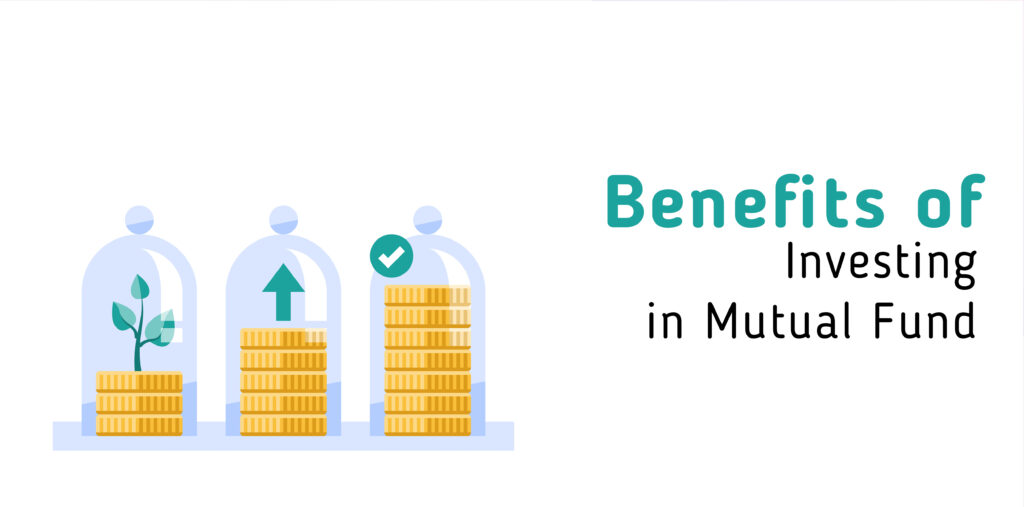Most professionals look forward to receiving that crucial text message on the last day of the month notifying them that their bank accounts have been credited with their salary. Most people consider their salary income to be a ticket to spending and meeting their monthly EMIs.
As salaried employees in India, different investment options exist in 2022 for Indians to wisely invest and grow their hard-earned money. Traditional investment options such as Fixed Deposits, Recurring Deposits, National Pension Schemes (NPS), ULIPs, and others are available, as are modern investment choices such as investing in equities, Cryptocurrencies, and so on.
Best Investment Options
Here are the top investment options for salaried employees in India. You should diversify your investments across various investment instruments rather than focusing solely on one.
1. Direct Equity
With the rise of discount brokers, investing in direct equity through stock purchases has become simple and common in 2022. Salary employees can now open Demat and trading accounts and others within hours and invest the same day.
Investing in Direct Equity is risky, but the returns are higher than any other investment tool. Stockholders can anticipate an average CAGR return of up to 15% per year with careful planning. Furthermore, the initial investment required to invest in direct equity is very low, with investors able to purchase stocks worth as little as Rs 100.
2. SIP in Mutual Funds
Mutual funds are financial products controlled by professional fund managers that seek to pool investment opportunities from many people before investing them in financial ecosystem markets such as equity markets, debt markets, or a hybrid of the two.
In general, mutual funds are considered to be the best platforms for investors to take advantage of capital growth from the equity markets even if they lack confidence in managing their own money in the markets or do not have the time to conduct their research.
3. IPO Investment
The IPO, or Initial Public Offering, is the first time a privately held business sells its stock to the general public and enters the financial markets. It is also known as a ‘public offering.’
If you can pick the right company at the IPO stage, investing in IPOs can be very lucrative. If you have the endurance to hold the right IPO stock for the next 15-20 years as a salaried employee, you can profit greatly. Many early IPO investors in companies such as Infosys, TCS, Eicher Motors, and others have made millions of rupees by continuing to invest just ten thousand rupees or less.
4. ELSS
An ELSS (Equity Linked Savings Scheme) Mutual Fund is a type of Equity Mutual Fund that enables people and HUFs to deduct Income Tax from their Overall Income for Financial Year up to Rs.1.5 lakhs under Section 80C of the Income Tax Act, 1961.
They have a three-year lock-in term. The duration is calculated beginning with the unit’s allotment date (s). Although the profits are low in comparison to direct stock investment, the tax benefits more than compensate, particularly for salaried individuals in the highest tax bracket.
5. Employee Provident Fund (EPF)
The employee provident fund is the most important investment opportunity for paid employees in India. It is solely intended for retirement income funds, in which the worker and the employer each month deposit 12 per cent of the former’s basic salary amount to the employee’s provident fund account.
You can exempt your deposits to your EPF account from your taxable income. The maturity amount and investment gains on EPF are also tax-free if you have fulfilled a sufficient number of years of employment. EPF is a must-have investing choice for a salaried worker in India’s private sector.
Plan with Other Advantages
1. Unit-Linked Investment Plans
The Unit Linked Plan, or ULIP, is a kind of investment plan that offers coverage by channeling the payments made as premiums by the customer into the stock markets. Each ULIP has a unique set of funds in which it invests.
Individuals that engage in the finest investment plans receive a set number of fund units. These investments are based on the relationship between the fund value of the fund in which they are invested and the premium paid by the investors.
New era ULIPs, also known as 4G ULIPs, provide maximum choice than old ULIPs at a lower cost. Furthermore, the exemption of the LTCG tax in the Union Budget 2018 increased the popularity of ULIPs. 4G ULIP plans have low, if not nil, charges.
2. National Pension Scheme (NPS)
The National Pension Scheme, which concentrates on long-term retirement and is supervised by the Pension Fund Regulatory and Development Authority, is the next investing option. Previously, the minimum yearly contribution to an NPS for a tier-1 account was Rs 6,000, however, this has been reduced to Rs 1,000 for the account to stay active. It is a mix of liquid assets, corporate bonds, government money, fixed deposits, and other investments. The investor can likely determine how much money to put in the NIP via NPS based on his or her risk tolerance.
3. Fixed Deposits at Banks
Investing in a bank fixed deposit is consistently a safe and popular option for Indian investors. Beginning February 4, 2020, a bank depositor’s principle and interest will be guaranteed up to a maximum of Rs 5 lakh under the DIGC rules.
Previously, the protection was Rs 1 lakh for the principal and interest. Depending on the situation, one might choose a tenure that varies from month to month, quarterly, annually, or with a cumulative interest option in them. The earned interest rate is now included in the income, which is taxed according to the tax slab.
4. Gold
Gold is the most popular conventional investment opportunity in India, with no documentation (for direct gold purchases), high liquidity, and long-term returns surpassing inflation.
During equities market corrections, gold investment serves as an ideal hedge when prices rise. Gold may also be a worthwhile option to pass on to future generations that may not have the luxury of finding gold in abundance.
Physical gold investments, such as purchasing jewellery or gold coins/bars, are accessible in India, as are paper gold assets, such as gold ETFs and equity-based gold funds. In India, gold investments are low-risk, moderate-return assets.
Where to Invest?
Gold, FD, RD, real estate, stock market, mutual funds, and bonds are well-known investment possibilities. But the most critical question is where you should invest. What is appropriate for you?
If you are 50 or older, you should invest in FDs, RDs, gold, and mutual funds. Play it safe. If you are between the ages of 35 and 55, consider real estate, gold, mutual funds, and stocks. Invest in equities, real estate, and mutual funds when you are young.
As you can see, mutual funds are popular for all ages. Why? Given that there are numerous investment options accessible based on age, risk tolerance, and financial situation. Anyone, no matter what, can begin investing. If you have information, you can begin investing without the assistance of others. However, if you lack information, you might seek the assistance of a Mutual Fund Distributor or a good investment advisor. He will lead you.
Options For Young Adults
Many potential investors are curious about the optimum timing to begin investing. The ideal time to respond is right now. By beginning investments early in life, one has a significant advantage – time. Investors who begin investing in their twenties will have more time to develop their money, putting them in a better position to easily achieve all of their financial goals.
Set Financial Goals and Make Investment Plans
Many people in their twenties have lofty financial goals, such as becoming a millionaire by the age of 30, planning at age of 40, and so on. The only way to meet these lofty financial goals is to design a financially sound strategy.
Some basic financial objectives to consider for persons in their twenties include:
- Creating an Emergency Fund to cover 9 to 12 months of expenses
- Having a financial objective, such as saving Rs.1 crore by the age of 30,
- A retirement funds target, such as an Rs. 5-10 crore retirement capital by the age of 60.
As one continues to age, one can explore objectives such as having a home, taking annual trips, planning for children’s education fees, and so forth.
After determining appropriate investment goals, it is time to devise a strategy for achieving these objectives. Investors must consider three critical factors while developing a financial plan:
- Investment Tenure – the length of time that an investment must be made.
- The quantity of investment – how much to invest
- The type of investment to be employed – equity, debt, or any other asset class
The twenties are an excellent period to establish personal finance best practices. Individuals can benefit from the simple principles discussed in this blog not only in their twenties but also later in their investment path, by applying the simple guidelines.






